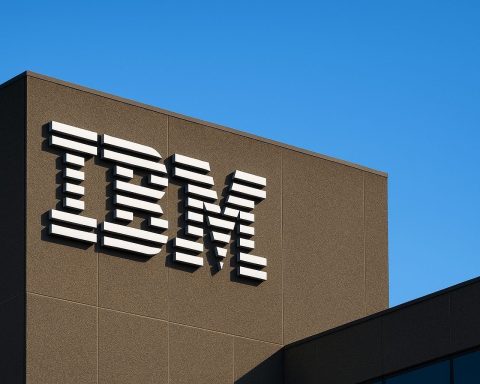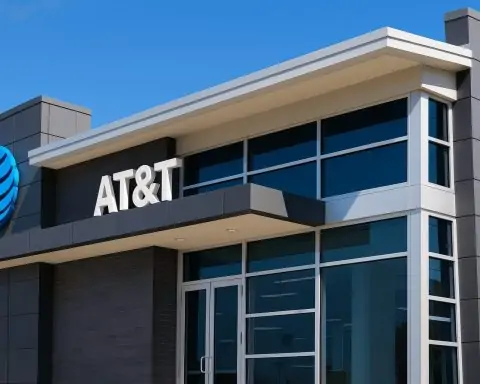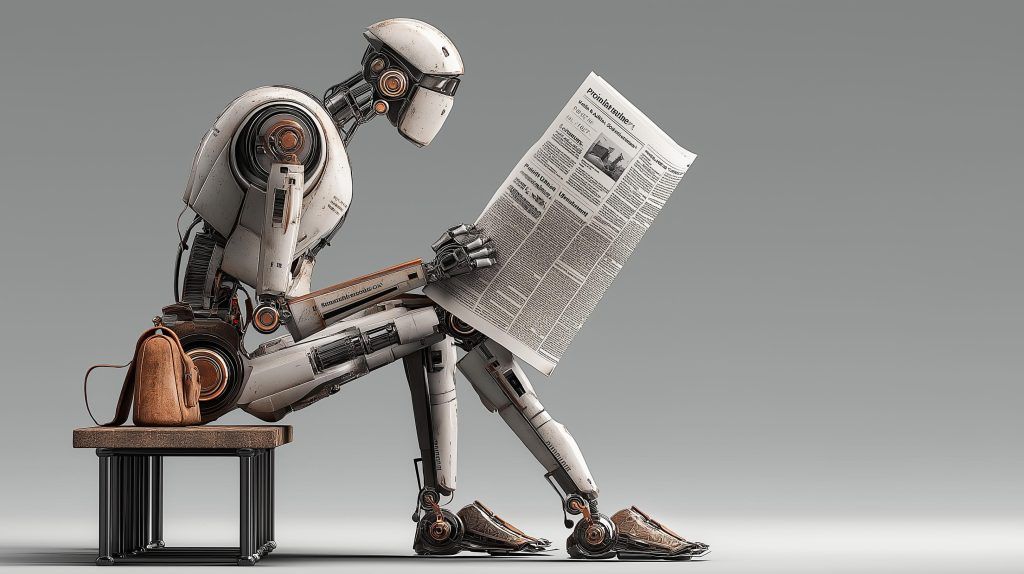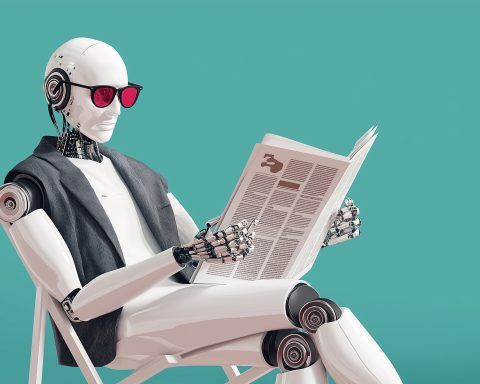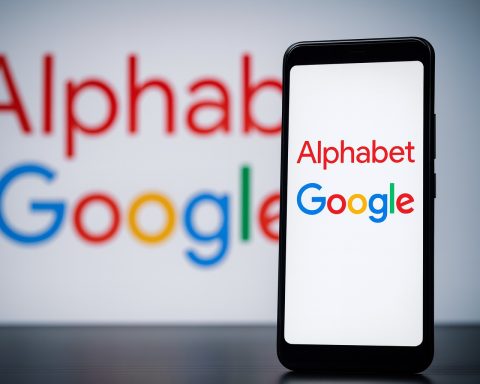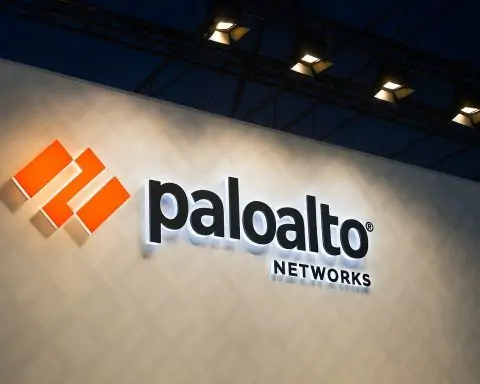- OpenAI’s experimental large language model earned a gold medal at the 2025 International Math Olympiad, solving 5 of 6 problems for 35/42 points, with OpenAI’s Alexander Wei hinting that GPT-5 will be a system of multiple specialized models orchestrated by a routing algorithm.
- ChatGPT introduced an autonomous ‘Agent’ mode on July 17, enabling web browsing, plugins, and online purchases, though it remains unavailable in the EU due to regulatory uncertainty.
- AWS unveiled ‘AgentCore’ for building autonomous AI agents, including a sandboxed code interpreter and integrated web browser, and pledged $100 million to fund ‘agentic AI’ startups via its Generative AI Innovation Center.
- Netflix announced it is using generative AI for visual effects, demonstrating an AI-assisted sequence completed 10 times faster and cheaper, with a lifelike AI-generated creature integrated into live-action footage.
- Meta Platforms launched ‘Superintelligence Labs’ and plans to invest hundreds of billions in AI, including a $14.3 billion purchase to acquire a 49% stake in Scale AI and the build-out of a 1-gigawatt Ohio data center and a 5-gigawatt ‘Hyperion’ facility in Louisiana, plus hiring Alexandr Wang as Chief AI Officer.
- Google DeepMind signed a $2.4 billion Windsurf acqui-hire, bringing Windsurf’s core engineering team to Google DeepMind after OpenAI had pursued a $3 billion bid; Cognition AI later bought Windsurf’s remaining business.
- PitchBook reported US startup funding reached $162.8 billion in the first half of 2025, with AI startups receiving about two-thirds of VC dollars, alongside mega rounds like OpenAI’s roughly $40 billion fundraising and Meta’s $14.3 billion Scale AI investment.
- The Pentagon awarded frontier AI contracts of up to $200 million each to OpenAI, Google, Anthropic, and xAI to develop defense AI prototypes, supplementing a June deal with OpenAI, while xAI rolled out a ‘Grok for Government’ package.
- The European Union’s AI Act is slated to take effect in phases from August 1, imposes a 7% global-revenue cap on fines for noncompliance, and was accompanied by July 18 guidelines and a voluntary AI Code of Practice.
- AI researchers split views: Yann LeCun remains optimistic about AI’s value, while Yoshua Bengio and Geoffrey Hinton warn of risks and urge safety measures and international coordination, as OpenAI launches a $50 million AI for Good fund.
Over the past 48 hours, the artificial intelligence world saw a whirlwind of major breakthroughs, big-money moves, and bold government actions. From a milestone achievement in AI research to massive funding deals and new regulatory steps, here are the top AI developments from July 20–21, 2025.
OpenAI Solves Math Olympiad, Hints at GPT-5 Next
OpenAI has achieved a stunning research milestone: an experimental large language model developed by the company earned a gold medal score at the 2025 International Math Olympiad (IMO) [1] [2]. The AI solved 5 out of 6 notoriously difficult problems under competition conditions, scoring 35/42 points – on par with the world’s top human math prodigies [3] [4]. “Our latest experimental reasoning LLM has achieved a longstanding grand challenge in AI: gold medal-level performance on the world’s most prestigious math competition — the International Math Olympiad,” announced Alexander Wei, an OpenAI researcher, in a social media post [5]. He noted that IMO problems demand “a new level of sustained creative thinking”, underscoring how far AI reasoning has progressed in just a few years [6].
This math-whiz model isn’t being released publicly yet [7], but the breakthrough comes as OpenAI is already gearing up for its next major launch. Wei revealed that GPT-5 is on the horizon and will be “a system of multiple specialised models” – each expert at different tasks – orchestrated by a smart routing algorithm [8]. This modular approach would eliminate the need for users to pick specific models, as prompts will automatically go to whichever sub-model is best suited [9]. In fact, insiders suggest GPT-5’s release is imminent, and OpenAI has even started training GPT-6 in parallel [10]. The company hasn’t confirmed exact dates, but Wei told users “we’re excited for you to try” GPT-5 soon [11] – hinting that a new era of AI capabilities may be just around the corner.
AI Agents Go Mainstream: ChatGPT Gets Autonomous, AWS Follows Suit
The past few days also marked a leap toward more autonomous AI assistants. OpenAI began rolling out a powerful new “ChatGPT Agent” mode that allows its popular chatbot to take actions on a user’s behalf online [12]. In this agent mode, ChatGPT can now browse the web, use plugins, and even make purchases or reservations for users – moving beyond passive Q&A into actively executing tasks [13]. Starting July 17, paying ChatGPT subscribers gained access to this feature, which OpenAI touts as a major step beyond ordinary chatbots. For example, one demo showed the AI agent successfully ordering an outfit for a wedding entirely on its own, factoring in the event’s dress code and local weather [14]. Early users marveled at the convenience (“I can’t believe it did the whole thing without me!” one exclaimed), while others urged caution about letting an AI roam free with credit cards. Notably, this agent feature remains unavailable in the EU for now due to uncertainty around impending regulations, frustrating some European users who feel they’re missing out [15]. OpenAI says human oversight is still essential, even as it showcases a glimpse of a future where mundane digital chores – from booking tickets to planning vacations – could be fully offloaded to AI [16].
Not to be outdone, Amazon announced its own foray into AI agents at its annual AWS cloud summit. AWS executive Swami Sivasubramanian unveiled “AgentCore,” a new toolkit for building autonomous AI agents at scale on Amazon Web Services [17]. AgentCore will provide companies with the building blocks – a secure sandboxed code interpreter, an integrated web browser, and more – to deploy AI agents that can handle complex tasks while keeping enterprise control in place [18]. Amazon is backing the push with serious money: it pledged an additional $100 million to fund startups developing “agentic AI” solutions via its Generative AI Innovation Center [19]. “It’s a tectonic change… It upends the way software is built… and potentially most impactfully, it changes how software interacts with the world – and how we interact with software,” said Sivasubramanian, AWS’s VP for Data and AI, describing the rise of autonomous agents [20]. Amazon also launched an AI Agents Marketplace to help businesses find vetted agent solutions [21]. While these agents promise to automate a lot of digital drudgery, Amazon’s exec stressed the need for guardrails as well, noting this “introduces a host of new challenges” even as it upends how we use software [22] [23].
Hollywood Embraces Generative AI for Visual Effects
The creative industries are also seizing on AI’s new powers. Netflix this week revealed it has started using generative AI tools to produce visual effects scenes in its productions – potentially transforming how movies and shows are made. In a recent demonstration, the streaming giant showed off an AI-assisted VFX sequence in an upcoming series that was completed 10 times faster and cheaper than using traditional methods [24]. The AI system was able to insert complex computer-generated imagery into live-action footage with uncanny realism – one example featured an AI-generated fantastical creature seamlessly integrated into a scene, complete with lifelike shadows and lighting, all without specialized sensors or green-screens [25]. Netflix’s co-CEO Ted Sarandos emphasized that the technology is a tool to enhance human creativity, not replace it. “AI represents an incredible opportunity to help creators make films and series better, not just cheaper… this is real people doing real work with better tools,” Sarandos said, pushing back on fears that automation will displace artists [26]. Netflix says many of its artists already use AI for tasks like pre-visualization, and the company is even experimenting with AI-driven personalized content and interactive storylines slated for later this year [27]. The takeaway: from office assistants to movie studios, AI innovations launched this week are rapidly changing workflows – and companies are eager to show they can harness these tools responsibly and creatively.
Big Tech’s Billion-Dollar AI Power Plays
Tech giants, for their part, have been doubling down on AI with eye-popping investments and talent moves. Meta (Facebook’s parent company) made waves by forming a new internal division called “Superintelligence Labs” and vowing to pour unprecedented resources into advanced AI. CEO Mark Zuckerberg has pledged “hundreds of billions of dollars” to build the massive data centers and R&D needed for AI at scale [28]. Over the past week, Meta went on a hiring spree “intensifying Silicon Valley’s talent war” [29]: the company poached top AI researchers from rivals – including at least two senior AI scientists from Apple – and even hired Alexandr Wang, the 28-year-old founder of Scale AI, to serve as Meta’s new Chief AI Officer [30] [31]. Zuckerberg’s aggressive hiring comes after Meta’s own models fell behind the competition; internal tests showed the last version of Meta’s LLaMA model lagging OpenAI and others [32]. By scooping up talent and pumping money into infrastructure, Meta hopes to catch up in the AI race. It has already invested $14.3 billion for a 49% stake in Scale AI, a data-labeling startup, to secure critical AI training data and personnel [33]. Meta is also building out new AI supercomputers – including a 1-gigawatt data center in Ohio and an even larger 5-gigawatt “Hyperion” facility in Louisiana – that will rank among the world’s biggest computing hubs [34] [35]. “We’re building multiple more titan clusters… just one of these covers a significant part of the footprint of Manhattan,” Zuckerberg wrote in a memo, underscoring the epic scale of Meta’s bet on AI [36]. His vision: an army of AI assistants and content generators embedded across Meta’s products, all powered by in-house supercomputing on a colossal scale [37].
Alphabet’s Google has been equally busy in the AI talent race. In a surprise move, Google’s DeepMind division struck a deal to hire the core engineering team of AI startup Windsurf – a company known for its AI-powered coding assistant – in what amounts to a $2.4 billion “acqui-hire” [38] [39]. The arrangement, announced July 12, has Google paying $2.4 billion in licensing fees for Windsurf’s technology and bringing on its CEO and top researchers, without formally acquiring the startup [40] [41]. This came after Google fended off a rival bid by OpenAI, which had been in talks to buy Windsurf for $3 billion [42]. Google said it is “excited to welcome some top AI coding talent from Windsurf’s team to Google DeepMind to advance our work in agentic coding” [43] – indicating the group will likely work on AI that can write and debug code autonomously. In the wake of Google’s grab, another player, Cognition AI, stepped in to acquire Windsurf’s remaining business outright (its product IP and customer contracts) in a deal announced July 14 [44] [45]. The financial terms weren’t disclosed, but Windsurf’s investors were already happy with Google’s payout, which gave them liquidity while they retained equity stakes [46] [47]. These moves reflect a broader trend: tech giants are spending vast sums not just on AI research, but on AI talent, effectively paying for brains rather than businesses. Microsoft and Amazon have similarly scooped up AI startups via quiet talent-centric deals in recent months [48] [49]. As one analyst quipped, big companies are in an “arms race” for AI experts, trying to secure human capital without triggering antitrust scrutiny that full acquisitions might bring [50].
Meanwhile, competition is extending to consumer platforms as well. Google is reportedly backing efforts to bring AI to smartphones: its venture arm has invested in Perplexity AI, a startup behind a new AI-powered mobile browser called Comet. Reuters reports that Perplexity is in talks with phone manufacturers to have the Comet AI browser pre-installed on devices, aiming to challenge the dominance of Google’s own Chrome with a browser that has an AI chatbot built in [51]. The browser would let users ask complex questions and have the AI fetch and synthesize information on the fly, representing another front where AI is transforming user experiences.
Investment Surge as AI Startups Soar in Value
The frenzy of investment in AI is reaching new heights in 2025. A new PitchBook report shows that U.S. startup funding jumped 75.6% in the first half of 2025, totaling $162.8 billion – the highest level since the 2021 VC boom [52]. Remarkably, nearly two-thirds of all venture capital dollars this year went into AI startups, as investors chase the next big breakthroughs fueled by generative AI [53] [54]. In just the last quarter, $69.9 billion poured into U.S. startups, much of it into AI deals [55]. Standout mega-deals included OpenAI’s $40 billion fundraise to bankroll its computing needs, and Meta’s $14.3 billion purchase of nearly half of Scale AI [56]. A slew of other AI players secured billion-plus rounds as well – from Anthropic to Adept and more – reflecting feverish optimism around artificial intelligence. “I think it’s downstream of the fact that OpenAI and Anthropic continue to grow at unbelievable rates,” explained one venture capitalist of the gold rush, noting that everyone is hunting for the next big AI advance in areas from robotics to drug discovery [57]. Ironically, even as money floods into startups, many VC firms themselves are struggling to raise new funds (VC fundraising is down ~34% year-over-year) [58] – a sign of caution among investors’ own backers – yet the fear of missing out on AI is so strong that cash continues to flow lavishly into the sector.
Several high-profile AI startups have seen their valuations skyrocket almost overnight. Anthropic, the maker of the Claude chatbot, is reportedly planning another investment round that could value the company at a staggering $100 billion, up from a $61.5 billion valuation earlier this year [59] [60]. According to a Bloomberg report, investors have approached Anthropic with unsolicited offers, impressed by the startup’s rapid revenue growth (Claude’s annualized revenue jumped from $3 billion to $4 billion in just the past month) [61]. Another rising star is Perplexity AI – the same search startup partnering with Google on mobile – which just secured $100 million in new funding that values it at $18 billion [62] [63]. Astonishingly, Perplexity was valued at only about $1 billion last year; its eighteenfold leap in valuation puts the young company on par with established Fortune 500 firms [64]. Such numbers illustrate the “unbelievable” investor appetite for generative AI plays [65]. Even smaller niche players are raising big sums. In one example, an AI startup working on code generation, Cursor, went from zero to $100 million in recurring revenue in under two years by January 2025 [66], demonstrating how quickly a successful AI product can scale. The AI investment boom is drawing in new participants too – just last week, JPMorgan Chase announced it is creating a dedicated research unit to cover private AI companies [67], and a veteran tech investor launched a $175 million fund focused solely on AI startups [68]. The consensus in Silicon Valley is that the transformational potential of AI – and the outsized profits that could come with it – have justified valuations that were unimaginable a year ago.
U.S. Government Pours Billions into the AI Race
Governments are not standing on the sidelines. In the United States, the past week saw an orchestrated push to boost American AI leadership through both investment and deregulation. President Donald Trump convened a high-profile “Energy and AI Innovation” summit in Pittsburgh on July 15, bringing together tech CEOs, energy executives and defense officials to strategize on expanding U.S. AI capacity [69] [70]. At the summit (hosted at Carnegie Mellon University by Sen. Dave McCormick), Trump and organizers announced roughly $90 billion in new AI-related investments concentrated in Pennsylvania [71]. “This is a really triumphant day… we’re doing things that nobody ever thought possible,” Trump proclaimed, celebrating the influx of tech projects into the region [72]. Among the big-ticket items: Google unveiled a $3 billion deal for 3 GW of new hydropower to run its future data centers – a 20-year electricity supply agreement that will support Google’s AI cloud growth in the state [73]. At the same event, investment giant Blackstone said it will spend $25 billion on data centers and energy infrastructure in Pennsylvania, a massive bet aimed at supporting AI and cloud computing demand [74]. Several other companies touted new AI data center parks, including a $6 billion project by startup CoreWeave to repurpose a steel mill site into an AI supercomputing center [75] [76]. The summit underscored how critical electric power and infrastructure have become to the AI race: Big Tech is scrambling to secure enough electricity for the energy-guzzling data centers that train and run AI models [77]. The White House, for its part, is preparing executive actions to help – including orders to speed up permits for power projects and to offer federal land for new data centers, tackling the bottlenecks that threaten to slow AI expansion [78]. An internal “AI Action Plan” ordered by Trump in January (with the goal to “make America the world capital of AI”) is due by July 23, and officials signaled that Trump will mark that with a major speech outlining further pro-AI measures [79]. Notably, the administration has been rolling back some regulations in the name of AI growth; earlier this year Trump revoked a 2023 Biden-era executive order on AI safety that had required companies to disclose certain risk data about their AI models [80]. The current stance from the White House is clear: prioritize innovation and “remove barriers” for U.S. AI developers, even as critics caution that a lighter touch on oversight could have downsides [81] [82].
National security is another big motivator for U.S. government action. In mid-July, the Pentagon awarded four landmark contracts – up to $200 million each – to OpenAI, Google, Anthropic, and xAI (Elon Musk’s new AI venture) to develop “frontier AI” systems for defense [83]. The Department of Defense said these cutting-edge AI prototypes will be used for everything from data analysis to decision support on the battlefield [84]. “The adoption of AI is transforming the DoD’s ability to support our warfighters and maintain strategic advantage,” said the Pentagon’s Chief Digital and AI Officer, underscoring how crucial these technologies are now deemed for national defense [85]. The military had already quietly inked a separate $200 million deal with OpenAI in June to adapt ChatGPT-style tech for warfighting scenarios [86]. And Musk’s xAI announced it is launching a special government-tailored version of its AI: a “Grok for Government” package offering its newest chatbot to federal and defense agencies [87]. (Musk has boldly claimed this “Grok 4” model is “the smartest AI in the world,” though that remains to be seen.) Washington’s deepening partnerships with top AI firms have raised some concerns on Capitol Hill. Senator Elizabeth Warren and others warned the DoD against becoming too dependent on a few private companies, urging the military to ensure a diversity of suppliers so that “a few billionaire-owned firms” don’t monopolize defense AI [88]. Pentagon officials insist they share those concerns and will seek competitive bids – even as they embrace Silicon Valley’s help to bolster America’s AI arsenal.
In a related move targeting security, U.S. lawmakers have introduced a bipartisan bill to ban federal agencies from using AI models made in rival nations like China. The proposed “No Adversarial AI Act” – introduced in late June – would create a permanent blacklist barring U.S. government use of AI systems from countries such as China, Russia, Iran and North Korea [89] [90]. The push was prompted by rising concerns over a Chinese company called DeepSeek, which recently claimed its language model could match ChatGPT’s abilities at a fraction of the cost. A U.S. national security review concluded DeepSeek was likely “aiding China’s military and intelligence operations” and even obtaining advanced U.S.-made AI chips for training [91]. “The U.S. must draw a hard line: hostile AI systems have no business operating inside our government,” said Rep. John Moolenaar (R-Mich.), one of the bill’s sponsors and chair of the House Select Committee on the Chinese Communist Party [92]. The legislation would empower the government to purge any AI software from adversary states from federal systems (absent special exemptions for research) and to keep the ban updated as new foreign models emerge [93] [94]. The issue also highlights the intertwined concern of AI and export controls: even as the U.S. tightens rules on Chinese AI, it has partially eased certain chip export restrictions. The Commerce Department quietly granted Nvidia licenses to resume selling some advanced AI chips to Chinese customers, allowing Nvidia to ship a modified high-end processor (the H20) to China [95]. Nvidia’s CEO Jensen Huang visited Beijing and praised China’s “world-class” AI research community, vowing Nvidia will sell “whatever we are allowed to” under U.S. rules [96]. That policy tweak sparked immediate political pushback in Washington: lawmakers like Rep. Moolenaar argued that “we can’t let the Chinese Communist Party use American chips to train AI models that will power its military” [97] [98]. The Biden-Trump policy divide on AI is stark – with the current administration favoring aggressive promotion of AI and fewer regulations, while some lawmakers urge caution particularly on foreign fronts. The coming weeks (and the 2024 election campaign) are likely to feature even more debate on how to balance AI innovation with security and ethics in the U.S.
Europe Rolls Out New AI Rules and Guidelines
Across the Atlantic, Europe is taking a very different approach – focusing on strict rules to govern AI development. The European Union’s landmark AI Act was finalized last year and will begin to take effect in phases starting August 1. In preparation, Brussels issued fresh guidance on July 18 to help companies comply with the new law [99]. The EU AI Act uses a risk-based framework, imposing heavier requirements on higher-risk AI systems, especially advanced “foundation models” (the large general-purpose models from firms like OpenAI, Google, Meta, Anthropic, as well as upcoming European models like Mistral) [100]. Under the guidelines, developers of these powerful AI systems deemed to have “systemic risks” must implement rigorous safeguards. They will be required to conduct adversarial testing of their models to probe for vulnerabilities, report any serious incidents or misuse to EU authorities, ensure strong cybersecurity to prevent malicious use, and document their training data and methodologies to meet new transparency and copyright standards [101]. Companies that fail to comply could face fines up to 7% of global revenue under the Act [102] – a penalty even stiffer than the EU’s GDPR fines for data privacy. “With today’s guidelines, the Commission supports the smooth and effective application of the AI Act,” said EU tech chief Henna Virkkunen, aiming to assuage businesses’ fears about the compliance burden [103].
In tandem, the EU has introduced a voluntary “AI Code of Practice” as a stopgap measure until the law fully kicks in. Brussels invited major AI firms to sign the voluntary code this summer, effectively pledging to follow the forthcoming rules early. Reactions from U.S. tech companies have been mixed: Microsoft indicated it will likely sign on to the EU code to “provide legal certainty” ahead of the Act [104]. Meta Platforms, however, declined to join the voluntary code – preferring to wait for the final law rather than commit early to guidelines that it had lobbied against [105]. This split reflects a broader tension between the European precautionary approach and American tech giants’ fears that overly strict rules could stifle innovation. European regulators argue that guardrails are necessary now to “prevent AI’s harms before they happen,” while many in Silicon Valley worry that heavy regulation will slow down progress and push cutting-edge research out of Europe [106]. All eyes are on how this transatlantic contrast will play out: Europe betting on proactive regulation to shape AI’s impact, versus the U.S. largely letting industry drive innovation with relatively light oversight (for now). Notably, the UK is also preparing to host a Global AI Safety Summit later this year, with input from companies like DeepMind, as it seeks a middle path of encouraging AI growth while convening countries to agree on safety measures [107]. As the EU’s rules come into force and other nations consider their own AI strategies, the stage is set for a global conversation on how to harness AI’s benefits while managing its risks.
Experts Duel on AI’s Promise and Peril
Amid the rapid developments, leading voices in the AI community are offering sharply contrasting perspectives on how worried (or excited) we should be. On the optimistic side, Yann LeCun – Meta’s chief AI scientist and a Turing Award–winning pioneer of deep learning – remains a vocal skeptic of doomsday predictions. LeCun argues that today’s AI systems are nowhere near true autonomy or human-level intelligence, and he frequently reminds audiences that “AI is not going to kill us all.” Instead, he envisions a future where “everyone will be smarter… [and] AI will create far more value than it destroys,” as AI becomes a powerful tool to solve problems and boost productivity [108]. LeCun has been bullish that AI’s benefits will vastly outweigh its downsides. He also downplays timelines for so-called AGI (artificial general intelligence), suggesting that human-level AI is not just around the corner and, when it does eventually arrive, it will likely consist of many “smart modules” specialized in different tasks rather than a single omniscient machine [109]. In a recent interview, he even chuckled at the notion of an imminent robot uprising, quipping that whenever true AGI comes, “it won’t be an alien overlord, but a tool we’ve designed.” This confidence resonates with many engineers who feel that AI panic is overblown and that heavy-handed regulation could needlessly hold back progress.
On the other hand, some of LeCun’s equally illustrious peers have grown more alarmed as AI capabilities advance. Yoshua Bengio and Geoffrey Hinton – two fellow “godfathers of AI” who, along with LeCun, won the Turing Award for their foundational work on neural networks – have issued cautionary warnings. Bengio has advocated for slowing down certain AI research to ensure safety, even suggesting a temporary global moratorium on training the most advanced models until better guardrails are in place. Hinton, who made headlines in May by resigning from Google to speak freely about AI’s risks, has openly likened the threat of uncontrolled AI to the danger of nuclear weapons [110]. He argues that without proper oversight, super-intelligent AI could one day pose an existential risk, and he’s urged global coordination – akin to nuclear arms control – to prevent an AI arms race. Just this week, Hinton joined dozens of other AI luminaries in calling for much more research into AI alignment (teaching AI systems to follow human intentions and values). As AI models grow more powerful and complex, Hinton and others emphasize that ensuring these systems “follow human intent and values” is paramount for long-term safety [111]. This camp welcomes certain regulations (like requirements for red-team testing AI models for dangerous behaviors) and international cooperation to manage extreme risks.
Industry leaders are trying to balance these two perspectives. Sam Altman, CEO of OpenAI, has found himself straddling both the excitement and the anxiety around AI. He acknowledges that “superintelligent” AI could pose existential risks in the future and has even testified to Congress about the need for oversight. At the same time, Altman cautions against “draconian” rules that would smother innovation or hand an advantage to less-restrained actors overseas. OpenAI is attempting to demonstrate a commitment to societal benefit – this week the company launched a $50 million “AI for Good” fund to support nonprofits and community projects using AI for education, healthcare and other public interest causes [112]. The fund was a response to recommendations from OpenAI’s own ethics board and is meant to show that even as the company chases massive private investment, it hasn’t forgotten its altruistic roots [113]. “We’re excited to support organizations using AI to tackle important problems,” OpenAI said, framing the fund as evidence that AI’s gains can be broadly shared [114]. As Altman travels the world meeting with regulators, he’s effectively become an ambassador for a “balanced” approach – encouraging reasonable safeguards (and even suggesting a licensing regime for the most advanced AI labs) but warning that over-regulation could entrench big players and hinder beneficial innovations.
The split in viewpoints extends to tech insiders and the public as well. At Meta’s offices, many engineers side with LeCun’s optimism, even jokingly listing their job titles on LinkedIn as “Poached by Zuckerberg’s Superintelligence Labs” after the latest hiring spree [115]. In contrast, some employees at Musk’s xAI have reportedly pushed back internally, worrying about building “dystopian tech” if AI is applied to autonomous weapons or surveillance [116]. Online, AI advances are met with a mix of awe and anxiety: social media is filled with both marvels at creative new AI tools and dark humor about AI taking people’s jobs [117]. Even within companies like Google’s DeepMind, researchers are asking tough questions about the current race – wondering if endlessly scaling up model sizes is yielding diminishing returns and fretting about the environmental and societal costs [118]. DeepMind’s CEO Demis Hassabis addressed such concerns in an all-hands meeting, agreeing on the need for “more energy-efficient AI” and hinting that future breakthroughs might come from more brain-like approaches rather than brute-force compute [119]. As AI becomes ever more powerful and ubiquitous, these ethical and strategic debates are only intensifying.
In summary, the last two days showcased AI’s breakneck pace on all fronts: scientific breakthroughs that once seemed decades away, commercial deals worth tens of billions, and government initiatives rewriting the rules for this technology. The world’s top companies and researchers are racing both to push AI to new heights and to rein in its risks. As one observer noted, we’re witnessing a duel of emotions – thrill at AI’s promise and unease at its power – playing out in real time. If July 2025 is any indication, the coming weeks and months will bring even more headline-making developments in the fast-evolving saga of artificial intelligence. (Reporting period: July 20–21, 2025)
Sources: Official news releases, company statements, and reputable outlets including Reuters, Bloomberg, Fortune, Analytics India Magazine, and others [120] [121] [122] [123]. All information is time-stamped to the dates of July 20–21, 2025, with direct quotes and data from the cited sources.
References
1. analyticsindiamag.com, 2. analyticsindiamag.com, 3. analyticsindiamag.com, 4. analyticsindiamag.com, 5. analyticsindiamag.com, 6. analyticsindiamag.com, 7. analyticsindiamag.com, 8. analyticsindiamag.com, 9. analyticsindiamag.com, 10. analyticsindiamag.com, 11. analyticsindiamag.com, 12. ts2.tech, 13. ts2.tech, 14. ts2.tech, 15. ts2.tech, 16. ts2.tech, 17. ts2.tech, 18. ts2.tech, 19. ts2.tech, 20. ts2.tech, 21. ts2.tech, 22. ts2.tech, 23. ts2.tech, 24. ts2.tech, 25. ts2.tech, 26. ts2.tech, 27. ts2.tech, 28. www.reuters.com, 29. www.reuters.com, 30. ts2.tech, 31. www.reuters.com, 32. ts2.tech, 33. www.reuters.com, 34. ts2.tech, 35. ts2.tech, 36. ts2.tech, 37. ts2.tech, 38. www.reuters.com, 39. www.reuters.com, 40. www.reuters.com, 41. www.reuters.com, 42. www.reuters.com, 43. www.reuters.com, 44. www.reuters.com, 45. www.reuters.com, 46. www.reuters.com, 47. www.reuters.com, 48. ts2.tech, 49. ts2.tech, 50. ts2.tech, 51. ts2.tech, 52. www.reuters.com, 53. ts2.tech, 54. ts2.tech, 55. www.reuters.com, 56. www.reuters.com, 57. www.reuters.com, 58. ts2.tech, 59. www.pymnts.com, 60. www.pymnts.com, 61. www.pymnts.com, 62. economictimes.indiatimes.com, 63. economictimes.indiatimes.com, 64. ts2.tech, 65. ts2.tech, 66. www.reuters.com, 67. ts2.tech, 68. ts2.tech, 69. www.reuters.com, 70. www.reuters.com, 71. www.reuters.com, 72. www.reuters.com, 73. www.reuters.com, 74. www.reuters.com, 75. www.reuters.com, 76. www.reuters.com, 77. www.reuters.com, 78. www.reuters.com, 79. www.reuters.com, 80. ts2.tech, 81. ts2.tech, 82. ts2.tech, 83. ts2.tech, 84. ts2.tech, 85. ts2.tech, 86. ts2.tech, 87. ts2.tech, 88. ts2.tech, 89. www.reuters.com, 90. www.reuters.com, 91. www.reuters.com, 92. www.reuters.com, 93. www.reuters.com, 94. www.reuters.com, 95. ts2.tech, 96. ts2.tech, 97. www.reuters.com, 98. www.reuters.com, 99. ts2.tech, 100. ts2.tech, 101. ts2.tech, 102. ts2.tech, 103. ts2.tech, 104. ts2.tech, 105. ts2.tech, 106. ts2.tech, 107. ts2.tech, 108. ts2.tech, 109. ts2.tech, 110. ts2.tech, 111. ts2.tech, 112. ts2.tech, 113. ts2.tech, 114. ts2.tech, 115. ts2.tech, 116. ts2.tech, 117. ts2.tech, 118. ts2.tech, 119. ts2.tech, 120. analyticsindiamag.com, 121. www.reuters.com, 122. www.reuters.com, 123. www.reuters.com


